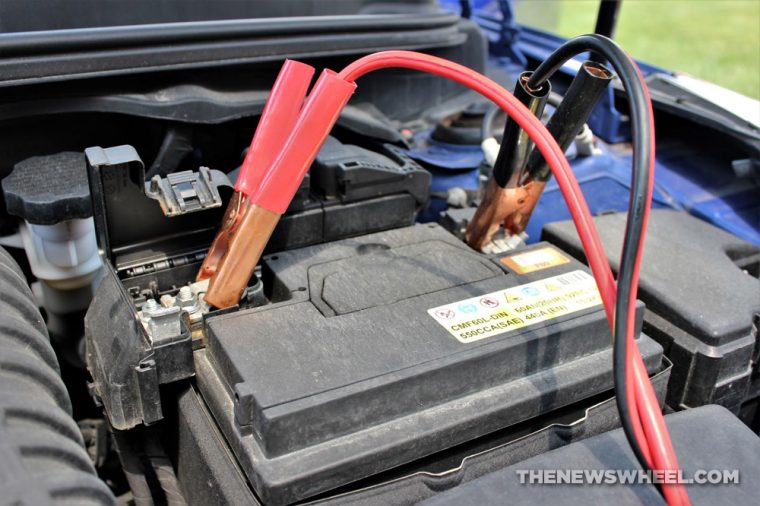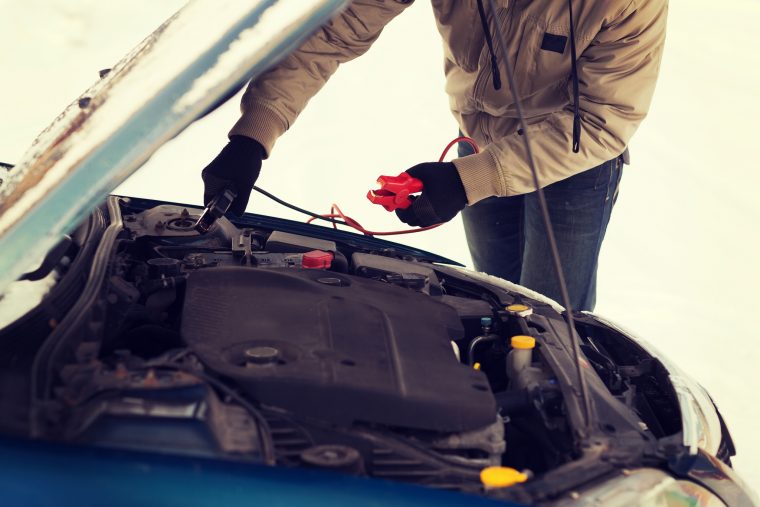How to Jump Start A Car
Whether you’ve been stranded on the side of the road or a friend who is stranded calls you for help, knowing how to jump start a car is an invaluable skill to have. Plenty of things can lead to a dead battery, including leaving interior or exterior lights on, extremely cold weather, and the battery just being old. Become familiar with this step-by-step guide so you’re prepared in the event of this common misfortune.
Time for a Change: These are the telltale signs that you need to replace your car’s battery
1. Find someone who can help
You’ll need a friend, family member, co-worker, or good Samaritan to help you out. Ask them if they can pull their car close enough to yours so that your jumper cables can reach from their battery to yours. Make sure the cars and all electrical components are off and the cars aren’t touching. (Tip: It’s a great idea to always keep jumper cables in your car.)
2. Locate the battery
In most cars, the battery can be found under the hood, near the front of the car. In some cases, it may be in the trunk or near the firewall between the engine and passenger compartment. Next, identify the positive and negative terminals on each battery. Usually, the positive terminal will have a plus sign and a red cable attached to it. Likewise, the negative terminal will be marked with a minus sign with a black cable attached.
3. Wear safety gear
If you happen to have gloves and goggles lying around, use them. Do a quick check for leaks, cracks, or other damage to the batteries. If you find anything, do not attempt to jump the car — call it a day and get a tow truck involved instead. Trying to jump start a car with a damaged battery can be quite dangerous.
4. Connect the jumper cables
Make sure your cables are untangled and attach them in the following order:
- Connect one red clamp to the positive terminal of the dead battery.
- Connect the other red clamp to the positive terminal of the good battery.
- Connect one black clamp to the negative terminal of the good battery.
- Connect the other black clamp to a piece of grounded metal on the car with the dead battery. (Look for a bolt, nut, or other protruding shiny metal. If you can’t find anything acceptable, you can connect to the negative terminal of the dead battery, but this may risk igniting hydrogen gas coming off the dead battery.)
- Start the working car’s engine. Let it run for a few minutes and rev the engine slightly for 30 to 60 seconds. This will charge the battery in the dead car.
5. Try to start the dead car
If the dead car does not start, disconnect the last negative connection, and make sure all other connections are secure by wiggling or twisting each clamp slightly. Replace the final negative clamp, and repeat step 5 in the previous section. If the dead car still won’t start, you may need to have it towed or replace the battery.
6. Remove the jumper cables
Once the car starts, remove the cables in the reverse order in which they were attached. Make sure none of the clamps touch each other or the cars. If this happens, it can cause a spark that could burn your hands or ignite flammable liquids in your car’s engine.
7. Keep the engine running
Go for a drive or run the car above idle (barely revved with your foot on the gas) for 5 minutes, or idle for 20 minutes before turning it off. This should give the battery enough charge to start again.
Indicator Lights: What do all those flashing lights mean on the dashboard?
These steps should ensure that you are safely able to jump-start your car. It’s vital that you are aware of the potential hazards that come with doing this process. If you’re nervous or scared about trying this, see if you can get the car towed to a local mechanic, who can take care of the battery for you.

Ben never thought he’d be writing about cars for a living, but here he is, knowing more about the Kia Stinger than he’d care to admit. When he’s not devoting his time to researching engine specs and other oh-so-exciting car details, he can be found enjoying time with his wife and dogs. See more articles by Ben.



